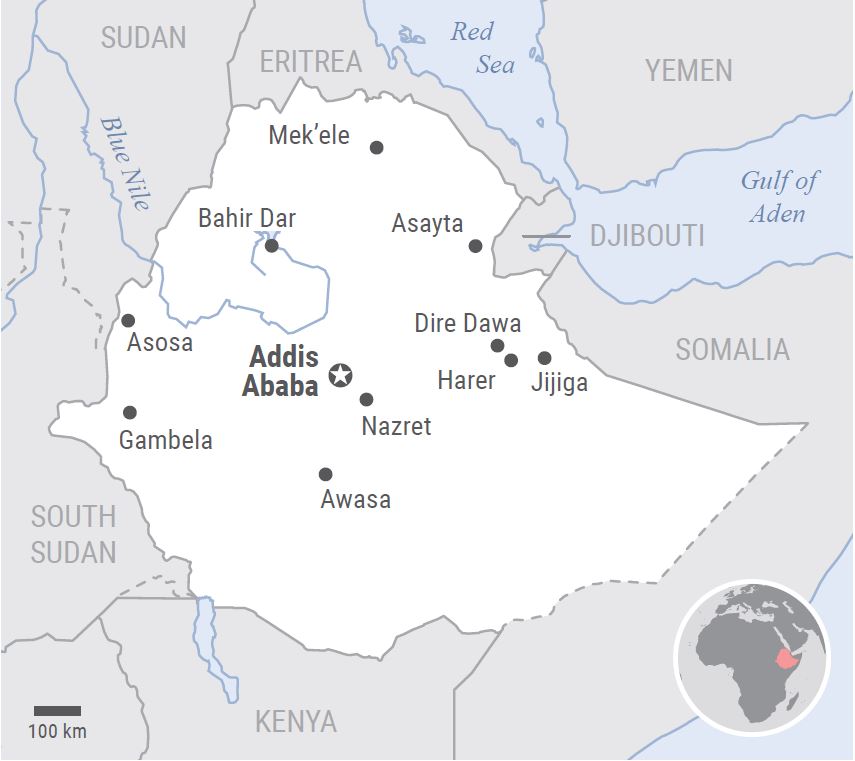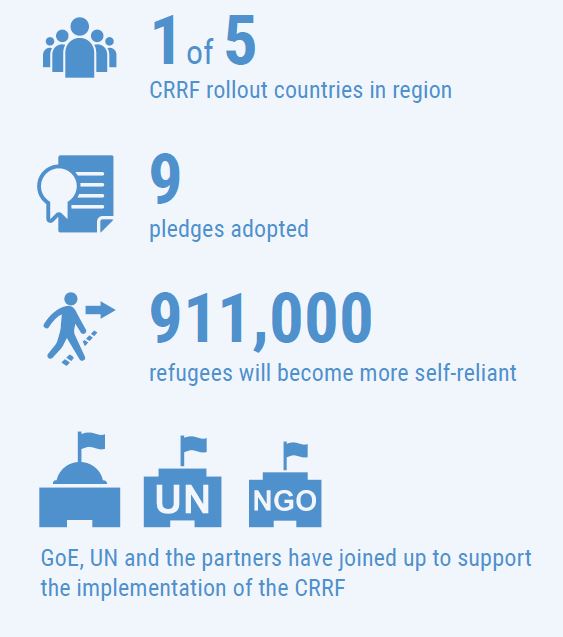Overview

While human development indicators have seen good progress, the absolute number and proportion of the population requiring social protection or humanitarian assistance is on an upward trend. Three consecutive years of droughts and an upsurge in ethnic conflict in 2017 have further exacerbated vulnerabilities, including over 1 million conflict displaced people. Ethiopia further hosts over 900,000 refugees from various countries.
The national policy dialogue on the New Way of Working (NWOW) has gained a solid ground, with both the Government of Ethiopia (GoE) and humanitarian and development actors actively engaged.
“It is my commitment as Secretary-General to work with you to end suffering and restore the human dignity of every person. The New Way of Working is our collective response to this end.”
António Guterres,
UN Secretary-General, Addis Ababa, 28 January 2018
Where do we stand?
There are a number of practical examples from Ethiopia of projects and programmes where humanitarian and development actors, including the host government, have pursued common objectives, particularly in the context of drought response and refugee response.
Dialogues around humanitarian-development collaboration have taken place in the Development Assistance Group (DAG) and Ethiopia Humanitarian Country Team (EHCT), as well as internal consultations within GoE line ministries.
Some of the broad steps taken:
- The GoE and partners have joined-up to deepen analysis, required to craft a NWOW vision for Ethiopia.
- The GoE is committed to deploying a NWOW strategy to reduce risk and vulnerabilities, particularly in drought-prone (lowland) areas, while taking concrete steps under the Comprehensive Refugee Response Framework.
- In 2018, the GoE and DAG will meet in a retreat with the aim to craft the strategy, also referred to as an ‘investment plan.’
- The retreat will be an opportunity to create a shared understanding of the challenges and problems caused by climatic shocks; set out a prioritized set of development interventions required to build the resilience of the most vulnerable (drought affected) areas; and commit to a more effective and efficient humanitarian response to assist those in need while building their resilience.
Lessons learned
Context is important
There is a need to allow flexibility in the implementation of the NWOW based on the specific country context. In Ethiopia, efforts include frontloading development work while providing emergency response in various sectors.
Mindset shift
There is a need for a mindset shift from the existing response model to a shock-management model, including articulating priorities around prevention, livelihoods, recovery and resilience alongside life-saving interventions.
Systemic issues
Ensuring coherent policy and operational guidance from headquarters to country offices is key to avoiding different offices (UN and non-UN) having different understandings of the NWOW.
Planning in 'silos'
Ethiopia’s humanitarian and development policy frameworks and initiatives are implemented in isolation from each other.


